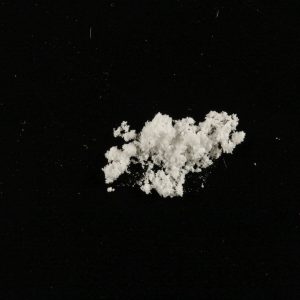DiPT (N,N-Diisopropyltryptamine).
A lesser-known psychedelic substance in the tryptamine class, DiPT (N,N-Diisopropyltryptamine) is drawing more and more interest because to its distinct aural effects. DiPT is notable for its powerful effects on sound and hearing, even though many psychedelics also alter visual perception. Because of this unique characteristic, both researchers and psychonauts are interested in it.
What is DiPT (N,N-Diisopropyltryptamine)?
Similar in structure to DMT (N,N-Dimethyltryptamine) and other naturally occurring tryptamines, DiPT (N,N-Diisopropyltryptamine) is a synthetic hallucinogenic tryptamine. Famous chemist Alexander Shulgin was the first to synthesise it, and he wrote about it in his book TiHKAL (Tryptamines I Have Known and Loved).
DiPT is particularly well-known for changing auditory perception, notably sound pitch, in contrast to the majority of traditional psychedelics that significantly modify vision and spatial perception. This distinguishes it from other psychedelics.
Chemical Structure and Classification
-
Chemical Formula: C16H26N2
-
Molecular Weight: 246.39 g/mol
-
Class: Psychedelic tryptamine
-
Related Compounds: DMT, MET (Methylethyltryptamine), 5-MeO-DiPT
No known plant or animal has DiPT naturally; it is a manufactured substance. Like other psychedelics, its hallucinogenic effects are ascribed to its interaction with serotonin receptors, specifically 5-HT2A.
DiPT Effects: What Makes It Unique?
Auditory Distortions
DiPT is distinguished from other known psychedelics by its unique audio effects. Users frequently report:
-
A drop or warping in the pitch of sounds
-
The perception of tones becoming “off-key” or “metallic”
-
Difficulty distinguishing between real and imagined auditory input
-
Time delay or reverb-like distortion in spoken language and environmental sounds
These effects are not merely subjective – many users with musical training confirm that the pitch shift can be measured in semitones or octaves.
Visual and Psychological Effects
Though primarily auditory, DiPT can also induce:
-
Mild to moderate visual distortions
-
Altered sense of time
-
Enhanced introspection
-
Emotional fluctuations
-
Occasionally, feelings of confusion or disorientation
DiPT is generally thought to have fewer visual hallucinations than LSD or psilocybin. A “clean” mental state is reported by some users, while others find the auditory disarray to be confusing or even unnerving.
Dosage and Duration
DiPT can be given by vaporisation, insufflation, or oral administration. The most popular and researched method is oral ingestion.
Common Dosage Range:
Duration: The effects of oral DiPT usually start gradually and peak two to three hours after intake, lasting six to eight hours on average. Compared to other sensory modifications, the auditory impacts typically last a little longer.
Potential Risks and Side Effects
As with all psychedelics, DiPT carries certain risks, especially when used irresponsibly or in unsafe settings.
Common Side Effects:
-
Nausea or gastrointestinal discomfort
-
Anxiety or paranoia, especially during the peak
-
Sensory overload due to unfamiliar auditory shifts
-
Difficulty in communication (misinterpreting sounds)
Long-Term Safety
The long-term safety of DiPT has not been thoroughly studied. Long-term effects on hearing have not been ruled out, but anecdotal accounts indicate no immediate toxicity at typical levels. After prolonged or intense use, some users experience persistent abnormalities in their pitch perception.
Harm Reduction Tips
-
Start with a low dose, especially for first-time users
-
Use in a quiet and controlled environment
-
Avoid combining with other substances
-
Ensure a trusted sitter is present
-
Be cautious if you rely on accurate hearing for professional or musical purposes
Legal Status of DiPT (N,N-Diisopropyltryptamine)
The legal status of DiPT varies by country and is often in a gray area due to its novelty and relative obscurity.
United States
Although DiPT is not scheduled at the federal level, if it is meant for human consumption, it might be regulated under the Federal Analogue Act. This implies that there may still be legal repercussions for possession or sale, particularly if it is thought to be an analogue of a restricted substance.
Other Countries
-
Canada: Not specifically listed, but may fall under analog drug laws
-
UK: Likely illegal under the Psychoactive Substances Act 2016
-
Australia: Likely controlled as an analog of a scheduled substance
-
Netherlands: Not scheduled, but may be considered under research chemical regulations
Research and Future Outlook
In formal scientific literature, DiPT is still mainly unexplored. The majority of information on the substance is derived from Shulgin’s personal notebooks, forums such as Erowid, and anecdotal user stories. DiPT’s unique auditory effects may present intriguing directions for further study on the impact of psychedelics on sensory processing, especially in the field of auditory neuroscience.
Researchers may be able to better comprehend conditions like tinnitus, auditory hallucinations, and even the nature of synaesthesia if DiPT is investigated more.
Conclusion
N,N-Diisopropyltryptamine, or DiPT, is a special psychedelic substance that casts doubt on our knowledge of how tryptamines affect the brain. It differs from more conventional psychedelics like LSD, psilocybin, or DMT in that it produces strong and frequently strange audio distortions.





Reviews
There are no reviews yet.